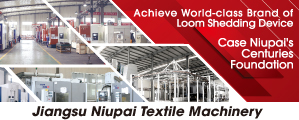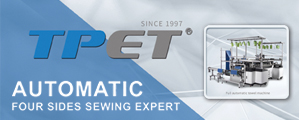China’s Chemical Fiber Industry Status Quo (First 3Qs of 2012)
Jul 03, 2013 | by
During the first three quarters of 2012, China’s chemical fiber industry saw an overall smooth operation while production, investment and other business activities still maintained a certain growth; however, the benefits dropped apparently owing to market downturn, weak downstream demand, continued falling product prices, as well as poor connection between manufacturing and sales, and the increased inventory. Although the domestic economy shows a tendency to be stabilized, the chemical fiber industry in the fourth quarter is still under a grim situation.
Overall smooth operation
l Still rapid growth of production
From January to September in 2012, chemical fiber production still maintained a rapid growth with a volume of 28.3519 million tons, increasing 11.94% year on year, while the growth rate saw a year-on-year decline of 4.12 percentage points. The viscose staple fiber, polypropylene and nylon enjoyed faster output growth with respective growth rate of 24.15%, 17.77%, and 16.57%. Polyester production growth rate dropped to below 10%, while acrylic and vinylon fiber saw the same output as the year of 2011.
Chart 1 Output of Chemical Fiber Industry (1-9, 2012)
|
|
Output (1-9,2012) (tons) |
The same period of 2011 (tons) |
Y/Y |
|
Chemical fiber |
28,351,900 |
25,327,800 |
11.94% |
|
Viscose staple fiber |
1,626,000 |
1,309,700 |
24.15% |
|
Viscose filament |
190,800 |
174,500 |
9.35% |
|
Polyester |
22,422,000 |
20,612,300 |
8.78% |
|
Nylon |
1,354,500 |
1,161,900 |
16.57% |
|
Acrylic |
520,600 |
519,800 |
0.14% |
|
Vinylon |
44,200 |
44,000 |
0.40% |
|
Polypropylene |
264,500 |
224,600 |
17.77% |
|
Spandex |
228,800 |
205,700 |
11.19% |
The main sub-sectors of chemical fiber industry basically started operation in a normal way during the first three quarters, and most of the sub-sectors saw an increasing operation rate while some industries have reached or even exceeded the level of the same period last year.
The imports of chemical fiber totaled 626,600 tons in the first nine months of last year, a slight reduction of 5.93% year on year. Acrylic still accounts the largest proportion of imports with import volume of 142,100 tons which remains basically stable compared to the same period of last year. Viscose staple fiber imports witnessed a rapid growth of 22.33% which are all from
Since chemical fiber industry’s entry into the downward period from the fourth quarter of 2011, the industry investment enthusiasm has been gradually returning to be rational. From January to September of last year, chemical fiber industry saw 760 construction projects and 479 newly-commenced projects which actually completed investment of 64.346 billion yuan, a year-on-year increase of 21.51%, dropping 24.8 percentage points compared with the same period of 2011 as well as a falling of 26.36 percentage points than the year of 2011.
l Market downturn
The market price of main chemical fiber categories presented an overall downward trend, while polyester and acrylic fiber products rebounded apparently in July and August.
According to the economic monthly data from National Bureau of Statistics of China, during the first nine months, the average rate of production and marketing of chemical fiber industry dropped to 95.99%, a year-on-year decline of 1.94 percentage points. Such main sub-industries as man-made fiber, nylon, and polyester saw a year-on-year decline of production and marketing rate, reflecting weak market demand and poor connection between production and marketing; however, there was some rising month on month.
Because the downstream demand remains in the doldrums, and the whole industry chain market outlook is poor, the stock is gradually transferred to the upstream. Therefore, the pressure from chemical fiber inventory was gradually increasing in the first half of 2012, and till the end of June last year, various chemical fiber stock reached a high position. However, the inventory began to drop apparently in July and August which reached the lowest of the year, and somewhat rising came back again in September.
l Obvious decline in benefits
According to the data from National Bureau of Statistics of China, during the first nine months of 2012, the chemical fiber industry saw total profits of 11.635 billion yuan with a year-on-year decrease of 48.13%. The percentage of industry suffering losses amounted to 30.05%, and the amount of losses that the money-losing enterprises suffered rapidly increased 1.4 times, reflecting that the enterprises’ profitability showed a trend of polarization.
Chart 2 Benefits of Chemical Fiber Industry (1-9, 2012)
(Unit:million yuan)
|
|
Total profits |
Losses of money-losing enterprises | ||||
|
|
Jan. – Sep. |
The same period of last year |
Y/Y |
Jan. – Sep. |
The same period of last year |
Y/Y |
|
Chemical fiber |
11,635 |
22,432 |
-48.13% |
5,237 |
2,180 |
140.26% |
|
Of them: Man-made fiber |
3,048 |
3,569 |
-14.60% |
1,641 |
1,287 |
27.47% |
|
Nylon |
1,248 |
1,524 |
-18.10% |
230 |
70 |
226.99% |
|
Polyester |
6,208 |
14,916 |
-58.38% |
2,068 |
268 |
672.44% |
|
Acrlic |
-93 |
45 |
-305.25% |
140 |
13 |
997.86% |
|
Vinylon |
-43 |
60 |
-171.59% |
71 |
91 |
-22.67% |
|
Polypropylene |
244 |
120 |
103.09% |
22 |
16 |
39.47% |
|
Spandex |
56 |
738 |
-92.40% |
513 |
122 |
321.01% |
|
Other synthetic fiber manufacturing |
704 |
979 |
-28.05% |
282 |
102 |
175.23% |
l Reasons of significant decrease in profits
Firstly, the profit base of chemical fiber industry was too high during the previous two years. Since March of 2009, chemical fiber industry has taken the lead to get out of the shadow of the financial crisis accompanied with better and better market situation, especially in 2010 and the first three quarters of 2011, the industry gained huge profits, and the highest profit rate in 2010 reached 7.16%.
The average profit rate of the industry in 2010 and 2011 was 3.03%, while the industry profit rate was 2.21% in the first half of last year, 0.82 percentage point lower than the average level. It is a normal performance in the recession cycle.
Secondly, there were great losses from the inventory material and products. During the first half of 2012, especially from the mid-February to the end of June, chemical fiber as well as its material prices saw a continuous downward trend. For example, the period from the middle of May to the middle of June is the month in which the price of polyester products fell fastest. It is estimated preliminarily that during that month the polyester product and material inventory losses reached five billion yuan. In fact, according to the instant price gap of chemical fiber as well as its main materials, there were no big changes in the normal processing last year, which was basically stable. Therefore, there is no need to worry much about the current benefit dropping in the chemical fiber industry.
l Highlights of the operation
First of all, chemical fiber industry actively promoted industry self-regulation to maintain market stability, and achieved good results.
Secondly, the enterprise operation presented an obvious differentiation. Within the environment of a decline in overall quality, the enterprises focusing on differential production showed their advantages quickly that a number of “specialized, small, unique, refined” enterprises were exerted small negative impact, even not affected. At the same time, more companies were pushed to increase research and development efforts to improve the added value of the products and the differential level.
Thirdly, the operation of polyester staple fiber was relatively stable and profitable, although profit margins showed somewhat decline. This is mainly due to the unobvious expansion of production capacity in recent years as well as the hysteretic effect from cotton replacement two years ago.
Fourthly, industry investment growth went back to a reasonable level, and the investment structure was optimized to a certain extent. Most of the new investment projects were engaged in the production of differential products, and PET bottle grade and film chip projects were also markedly increased.
Fifthly, Hengyi Petrochemical’s 200,000 tons of CPL project was put into operation smoothly, which broke the monopoly of the Multi-National Corporation, and broke through the bottleneck of the development of nylon industrial chain.
Major factors that affects industry operation
In addition to the slowed macro economic growth rate, the main factors affecting chemical fiber industry operation are as the following:
l Weak demand of downstream market
The most important factor that affects chemical fiber industry operation is the continuous weak demand of the downstream market.
Taking
During the first nine months, the main chemical fiber downstream products such as cotton blended yarn, chemical fiber yarn, chemical fiber cloth, and curtain cloth production witnessed an obvious decline in growth rate compared to the same period of previous year as well as all previous year. The non-woven fabric production saw a growth rate of 21.08%, 7.82 percentage points higher than the same period of the previous year.
Chemical fiber exports have been on a downward trend in the first eight months, and the exports from January to September reached 1,874,700 tons with a positive growth year on year, although the growth rate was only 1.67%. Since 2000, the chemical fiber export volume has maintained a rapid growth, and there is only one falling owing to the impact of the financial crisis in 2009. The big dropping of chemical fiber export volume growth rate last year shows that the international market demand is very weak.
From January to September, the textile industry exports continued to slow down to 192.693 billion USD with a slight increase of 1.04% year on year, which fell 22.98 percentage points over the same period of the previous year and 18.83 percentage points than all the previous year. Excluding price factors, textile and garment export volume is actually declining.
l Sharp fluctuation of raw material prices
The price of chemical fiber, especially synthetic chemical fiber, has a strong correlation with crude oil market. The sharp fluctuations in crude oil market from January to August resulted in chemical fiber market instability and increased the operating risk of enterprises. The continued rapid decline of crude oil price in May and June made the synthetic fiber products lose the cost support, and the product prices continued to fall. The rebound of polyester market in July and August is mainly due to the push of crude oil price.
l Great pressure from new capacity
Two years ago, the overall good operation of the chemical fiber industry as well as the continuous rising concern on the industry from the capital both inside and outside of the industry led to faster productivity growth. Although the growth rate of investment has dropped sharply in the first half of 2012, and part of the projects also delayed the construction or production, the new capacity is still under great pressure.
l Weakened support of cotton price
Cotton price in 2012 is much steadier than the previous two years, and the mainstream varieties are basically stabilized at around 19,000 yuan/ton, which is weakening in the support of the polyester staple fiber and viscose staple market. The market is more affected by the downstream demand and the main raw material prices.








